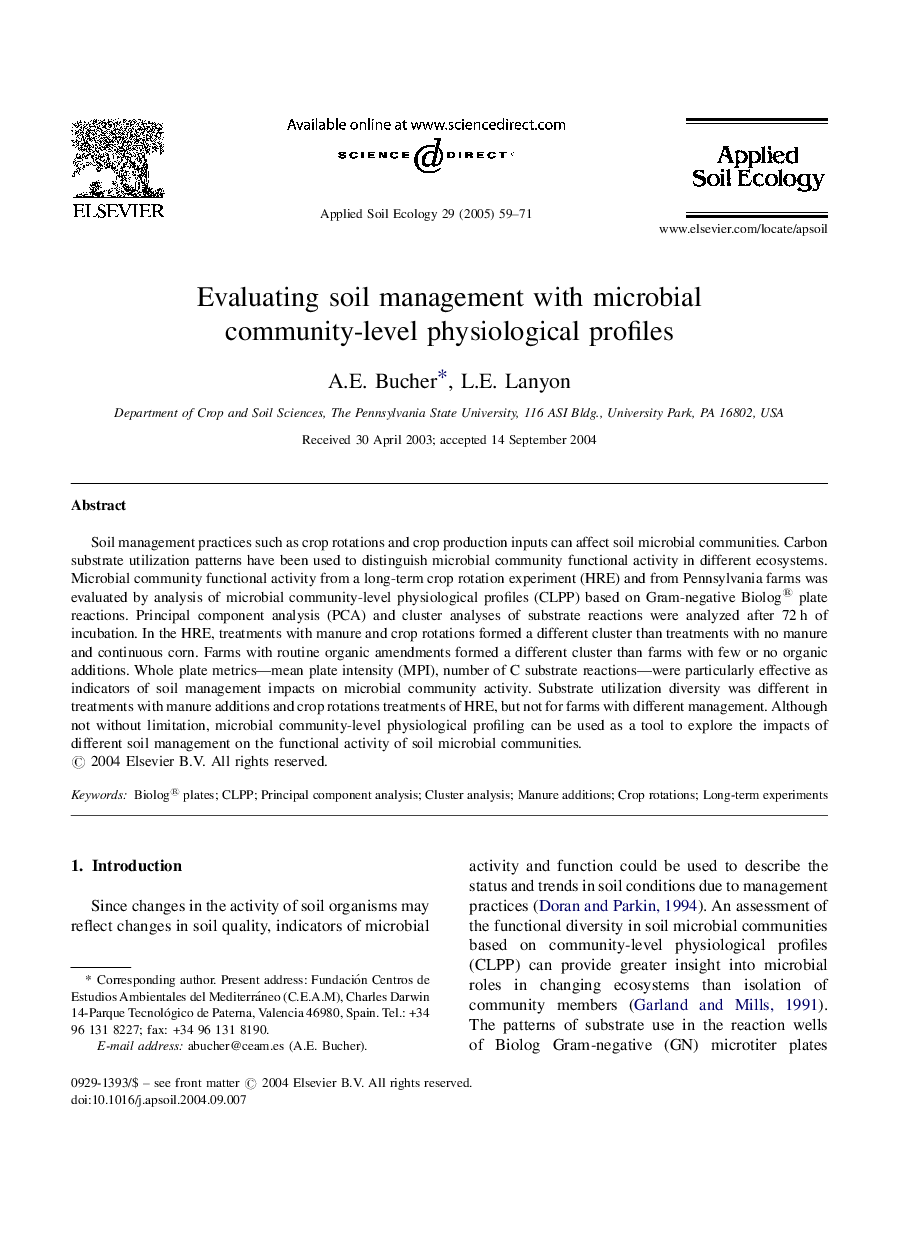| Article ID | Journal | Published Year | Pages | File Type |
|---|---|---|---|---|
| 9445264 | Applied Soil Ecology | 2005 | 13 Pages |
Abstract
Soil management practices such as crop rotations and crop production inputs can affect soil microbial communities. Carbon substrate utilization patterns have been used to distinguish microbial community functional activity in different ecosystems. Microbial community functional activity from a long-term crop rotation experiment (HRE) and from Pennsylvania farms was evaluated by analysis of microbial community-level physiological profiles (CLPP) based on Gram-negative Biolog® plate reactions. Principal component analysis (PCA) and cluster analyses of substrate reactions were analyzed after 72Â h of incubation. In the HRE, treatments with manure and crop rotations formed a different cluster than treatments with no manure and continuous corn. Farms with routine organic amendments formed a different cluster than farms with few or no organic additions. Whole plate metrics-mean plate intensity (MPI), number of C substrate reactions-were particularly effective as indicators of soil management impacts on microbial community activity. Substrate utilization diversity was different in treatments with manure additions and crop rotations treatments of HRE, but not for farms with different management. Although not without limitation, microbial community-level physiological profiling can be used as a tool to explore the impacts of different soil management on the functional activity of soil microbial communities.
Related Topics
Life Sciences
Agricultural and Biological Sciences
Ecology, Evolution, Behavior and Systematics
Authors
A.E. Bucher, L.E. Lanyon,
